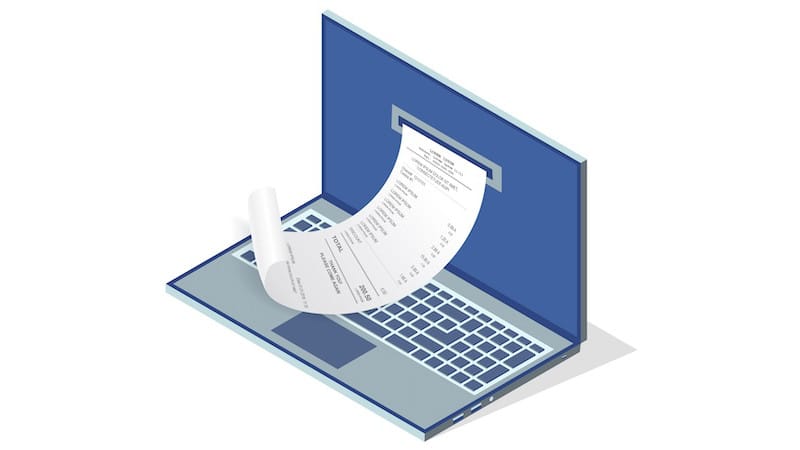
From January 1, 2025, invoices from company to company may only be sent electronically. But there are some exceptions and transition periods for the so-called e-invoice. We will explain to you what you need to consider when issuing invoices in the future.
With the ViDA initiative, the EU Commission wants to introduce an electronic reporting system and thus replace the previous summary reports. ViDA stands for “VAT in the Digital Age”, in German: sales tax in the digital age. The initiative is intended to promote digitalization in the economy.
It will still take a few years until the ViDA initiative is finally implemented at EU level. Nevertheless, some changes are necessary in the EU states along the way.
This also applies to invoicing in the B2B sector in Germany. For these, e-invoicing will be mandatory from January 2025. Entrepreneurs will therefore face some changes with the turn of the year. We will explain to you what this means for domestic companies and what exceptions and transition periods there are.
From 2025: This is what the new e-invoice must be able to do
To date, invoices that are sent digitally are already considered electronic invoices. These can be, for example, PDF documents that are sent and received via email.
However, this classification is only valid until December 31, 2024. From January 1, 2025, the only thing that counts as an e-invoice is an invoice that is “issued, transmitted and received in a structured electronic format,” as the Federal Ministry of Finance says.
Electronic processing must also be possible with the new e-invoice. A simple PDF document is no longer sufficient. To ensure that there are no ambiguities at the turn of the year, the timing of the transaction is crucial for the e-invoicing requirement.
So if you generated your sales before the turn of the year but issue your invoice later, the old rules still apply. However, for sales from January 1, 2025, you must adhere to the new rules.
What transition periods are there?
The legislature grants domestic companies transitional periods for the introduction of e-invoicing. These apply in the period from January 1, 2025 to December 31, 2026.
During this time, it is still permitted to use a so-called “other invoice“to create. These are invoices that do not constitute an e-invoice within the meaning of the new regulation – for example a PDF file sent by email.
It should be noted that only paper invoices are permitted in the transition period. For other invoices that are sent electronically, the recipient must have consent. This applies, for example, to PDF documents that companies send via email. The legislature wants to prevent the recipient from being expected to “accept an electronic format that is completely unknown to him”.
If the invoice issuer generated sales of up to 800,000 euros in the previous year, this transition period applies even longer. Then – with the consent of the recipient – invoices can be sent in the old format until the end of 2027.
Who is exempt from the e-invoicing requirement?
The obligation to issue e-invoices only applies to invoices that entrepreneurs issue in accordance with Section 14 of the Sales Tax Act (UStG). Conversely, this means that e-invoices are only mandatory if there is a sales tax obligation to issue an invoice. The following are therefore excluded:
- B2C sales, i.e. invoices to end consumers
- Invoices for tax-free transactions, such as tax-free financial services or tax-free property rentals
There are also exceptions if there is a sales tax obligation to issue an invoice. An e-invoice does not need to be issued in the following cases:
- Small amounts up to a gross amount of 250 euros (§ 33 UStDV)
- Tickets that count as invoices (§ 34 UStDV)
- Services provided by small businesses (Section 34a UStDV)1
- Services to legal entities that are not entrepreneurs, such as associations
- certain services to end consumers in connection with a property
E-invoice: Difference between creating and receiving
Despite the exceptions and transition periods, the legislature makes a distinction between the creation and receipt of e-invoices. Because while the creation is still subject to a transition period, receipt is actually mandatory from January 1, 2025.
Accordingly, from the new year onwards, a domestic company must ensure that it can receive e-invoices. However, the presence of an email inbox is sufficient for this.
According to the Federal Ministry of Finance, there are no exceptions to this. This is intended to avoid delimitation problems and thus the complication of tax law.
This also applies to Small business owner. These are excluded from the creation of the e-invoice. However, they must ensure – for example via an email inbox – that they can receive e-invoices.
Also interesting:
Source: https://www.basicthinking.de/blog/2024/11/27/e-rechnung-ab-2025-diese-ausnahmen-und-uebergangsregeln-gibt-es/


